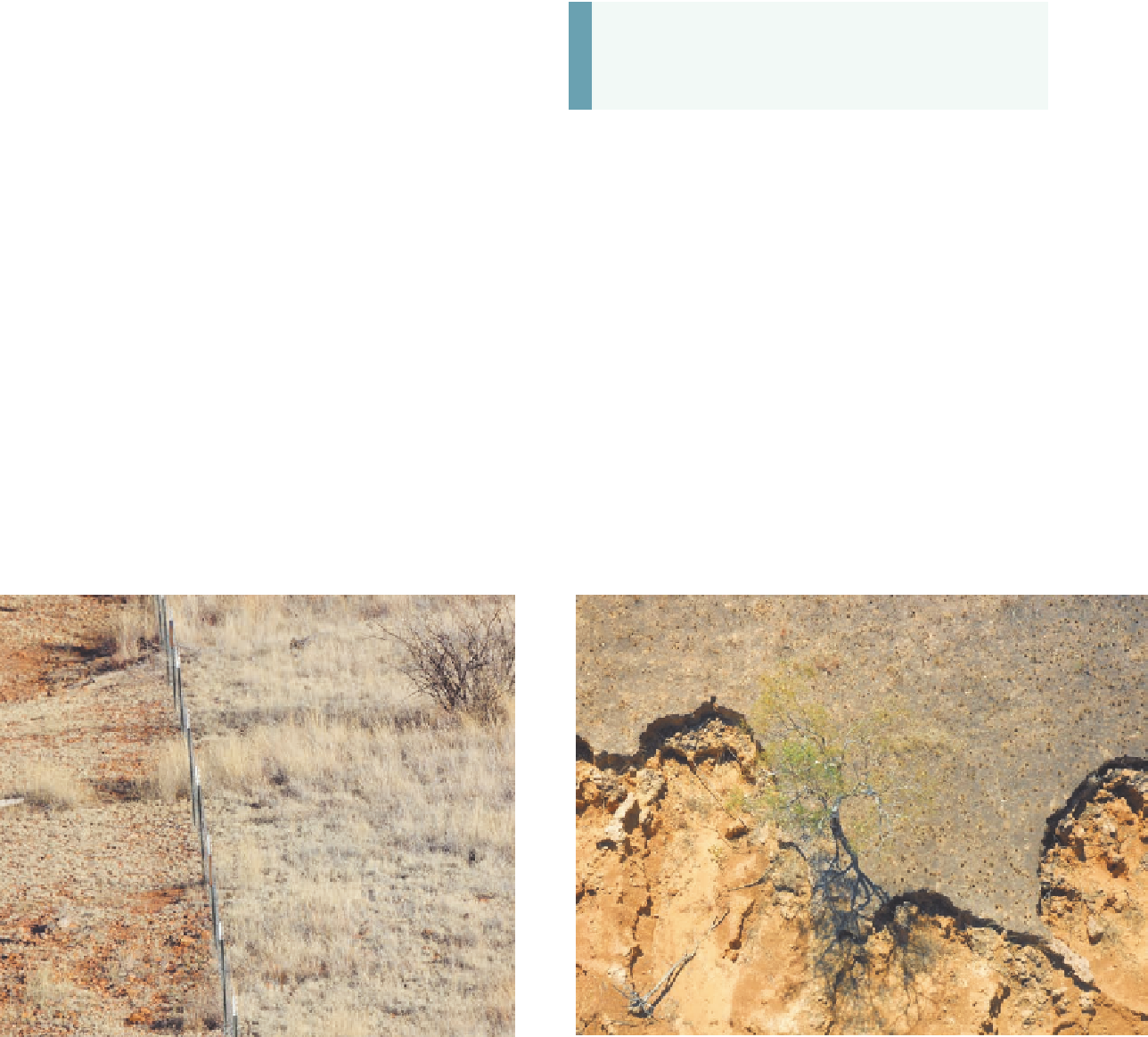Geoscience Reference
In-Depth Information
midlatitude grassland biome has been immense. In that context,
current estimates are that only 1% to 4% of virgin (unplowed)
prairie remains throughout the entire biome.
KEY CONCEPTS TO REMEMBER ABOUT
THE FACTORS THAT INFLUENCE THE
LOCALGEOGRAPHIC DISTRIBUTION
OF VEGETATION
Overgrazing
Another way that humans have impacted the network of natural
vegetation is through overgrazing of the landscape by livestock,
such as cattle and sheep (Figure 10.34a). This impact is most
extensive in marginal landscapes that are extremely sensitive
to disturbance, such as the more arid parts of the American
West. (Figure 10.34b). Prior to European settlement, this region
contained very few large herbivores that would have grazed on
the vegetation there. In the 20th century, however, this region
became available for ranchers because the U.S. Forest Service,
Bureau of Land Management, and National Park Service classi-
fied much of it as public lands. According to federal legislation,
it is permissible to graze sheep and cattle in these areas at a
very low cost. This practice continues to the present day and has
dramatically affected this biome. Some of the potential impacts
are weed invasion into disturbed areas, reduction in forest due
to grazing of young saplings, and the increased likelihood of
more intense and widespread fires.
1.
Throughout major global biomes, significant variations
can occur at local and regional scales.
2.
The topography and soil characteristics of a region
or area can significantly influence the vegetation
patterns.
3.
The same kind of vegetation changes that occur with
latitude also occur with altitude.
4.
Succession refers to the natural change in vegetation
that occurs following disturbance or fresh deposition of
sediment.
5.
Humans have dramatically altered the natural vegetation
in many regions of the world.
(a)
(b)
Figure 10.34 Impact of grazing on vegetation in the American West.
(a) This image of a fence line in Arizona shows the difference
between a plot heavily grazed (left) versus a healthy grassland (right). (b) Overgrazing reduces the cover of vegetation on hillslopes, which
can result in severe erosion when rain falls.

